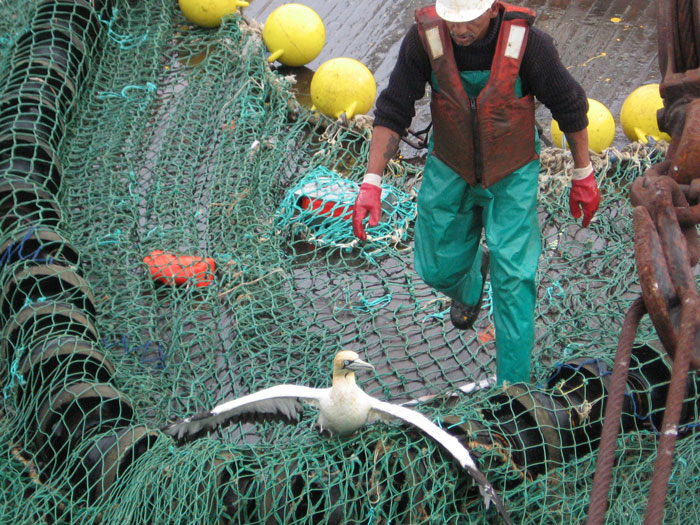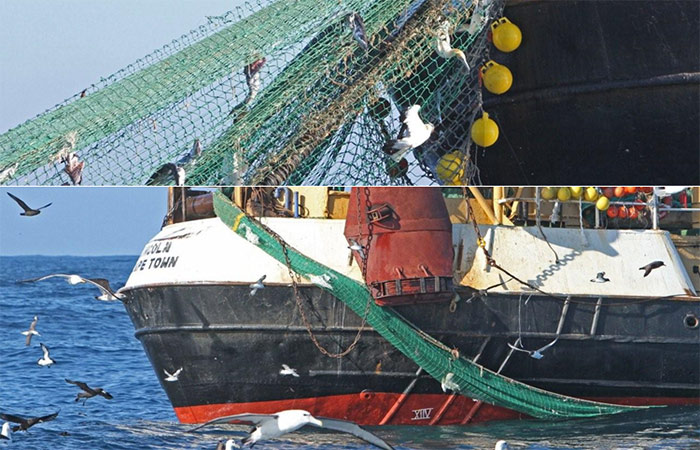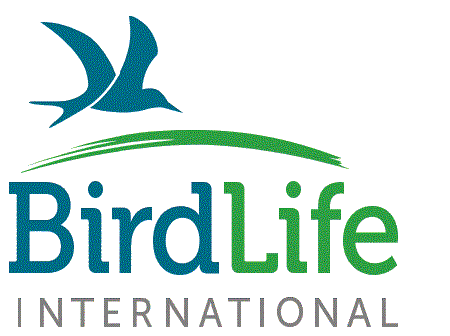Net entanglements now a major problem for South African seabirds

Despite huge success in reducing the incidental catch of seabirds in fishing nets, there’s been reports that an old type of vessel used in South Africa is still posing serious threats to seabirds.
The Albatross Task Force (ATF) has been highly successful in achieving a remarkable reduction in the incidental catch of seabirds in the South African hake trawl fishing industry through the introduction of bird-scaring lines; a simple and affordable solution. These lines act as visual deterrents to prevent cable strikes.
Despite these overwhelming achievements, there is a vessel class of side trawlers which is still posing a serious threat to seabirds. The side trawlers are some of the oldest vessels in South Africa’s demersal trawl fishery. These vessels haul catch over the side, rather than over the stern. The nets are also deployed over the side with the trawl warps passing through two blocks suspended at the stern. Hence trawl dragging is actively done from the stern.
Net entanglement is a major problem when the net stays loose on the sea surface for longer periods, for example during hauling and setting. Diving birds, mainly Cape Gannets can become trapped in the mesh of the net. Side trawlers are of special concern many because of the hauling process where loose net floats for a longer period compared to that of stern trawlers.
Evidence of this interaction by South African vessel, was captured on camera by our former Albatross Task Force leader Barry Watkins on one of his trips however we do yet have a clear idea of the magnitude of the issue in South Africa.
Currently there are no particularly successful mitigation measures to reduce the risk of seabirds becoming entangled in these nets. The current best practice advice suggested by ACAP (Agreement on the Conservation of Albatrosses and Petrels) is aimed at reducing the attractiveness of the net to seabirds and limiting the time the net remains of the water surface.

Eliminating discards during hauling and setting would reduce the number of attending birds and hence the risk of them being caught. However it is inevitable that birds will be attracted to a net full of fish, so encouraging fishermen to shorten setting and hauling times, as well as making sure that the nets are cleaned before setting is a further deterrent.
The ATF is also working with local governments and other stakeholders to ensure all target fleets are complying with the recommended mitigation methods. Furthermore each vessel class fleet now has tailored bird mitigation plans in place through the ongoing Bird Mitigation Plan (BMP) assessments.
These plans introduce a standard set of procedures to reduce seabird interactions, but still allow vessel operators to refine and adapt according to their vessel’s particular capabilities as well as allowing continued improvements through ongoing observations, information gathering and review processes.
Water cannons have been tested in Argentina, where high pressurised water has been used to scare away seabirds from the nets with varied success. Unfortunately, there is no definite conclusion about the effectiveness of this method.
Despite the difficulty in finding a successful mitigation measure, we continue to work on solutions across the globe, through the collection of reliable data to determine the incidental catch of seabirds in these kinds of vessels.
Birdlife International
15 March 2017
Share this story





